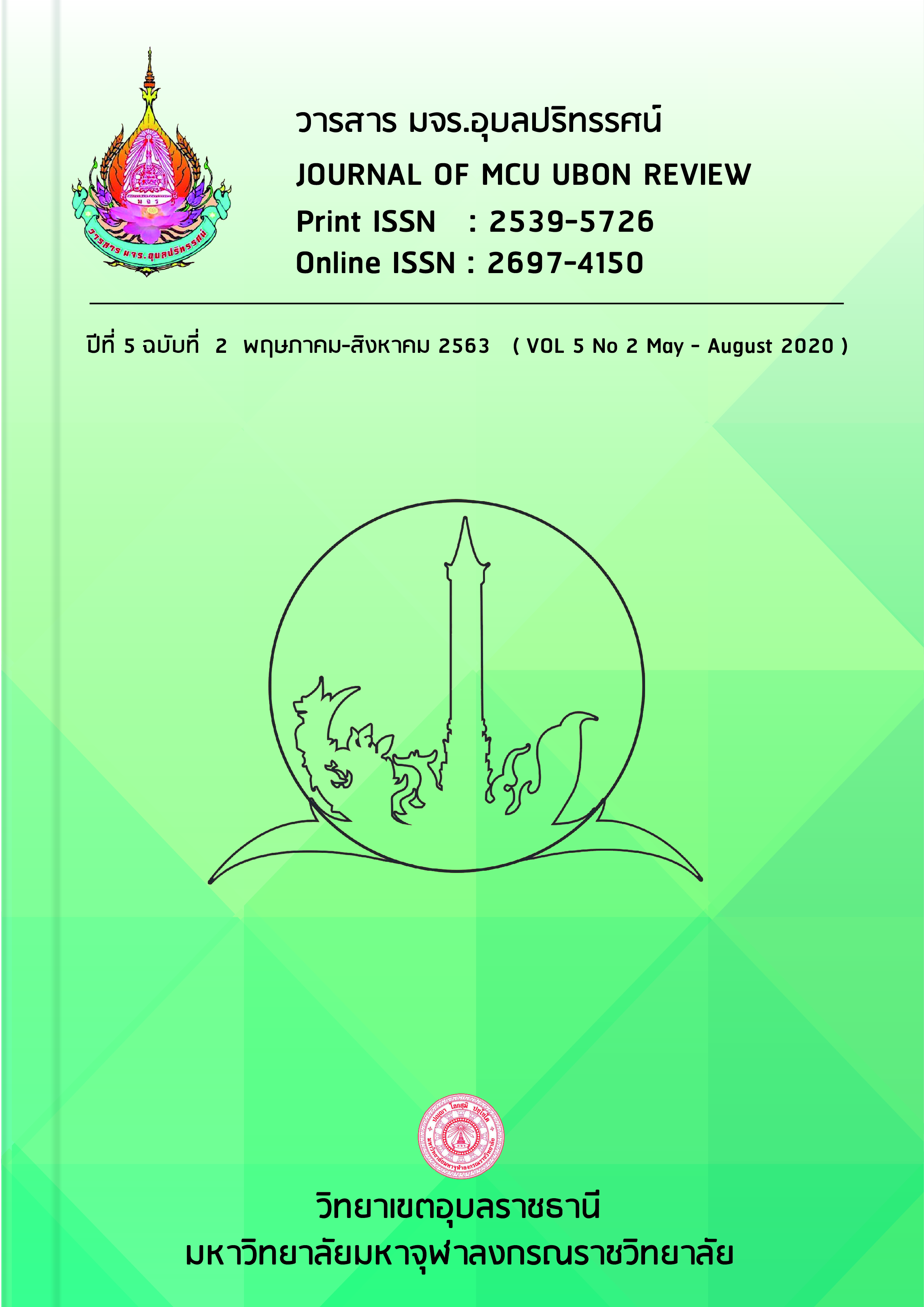The Mental and Wisdom Development Process of the Forest Monks for Promoting Buddhist Tourism in the North - East
Main Article Content
Abstract
The available natural resources for Buddhist tourism of forest monasteries in the northeast included the pleasant landscapes suitable for physical and mental relaxation and the well prepared Dhamma practice places with experienced trainers and practitioners’ accommodation. In cultural resources, some monasteries had significant Buddha statues with Buddhist arts by each era. Some of them were once the practice sites of the disciples of Phra Ajaan Mun Bhuridatto, the Father of Insight Meditation. These places were, thus, sacred sanctuaries enshrining eight necessities of a Buddhist monk, his venerable ashes and portraits for tourists to worship. In the resources of traditions, festivals and religious ceremonies, most of the forest monasteries organized religious ceremonies following the Buddhist Holy Days and birthdates of former insight meditation trainers (Phra Ajaan). Buddhist religious activities on Buddhist Holy Days included offering food to monks, observing the precepts, listening to the sermon, practicing Dhamma and concentrating and walking around the temple with a candle. In resources for servicing tourists, most of the forest monasteries had sufficient number of parking places and clean toilets well prepared for tourists. However, the monasteries should be supported in budgeting for preparing manuals and information technology for Buddhist tourism at international level. Opportunities for income generation should be promoted for the monasteries, communities and related sectors benefiting from tourism in forest temples in the North-East. In addition, the role of Buddhist activities and Dhamma practice for mental development should be accompanied with tourism. This will also cover cultivating consciousness on conserving sustainable Buddhist tourism.
Article Details
References
ชาญวิทย์ เกษตรศิริ.(2540). อารยธรรมไทยพื้นฐานทางประวัติศาสตร์. กรุงเทพฯ :บริษัท
เลิฟแอนด์ลิพเพรส จำกัด.
พระโพธิญาณเถร (ชา สุภทฺโท). (2554). อุปลมณี .อุบลราชธานี: ศูนย์เผยแผ่มรดกธรรม
พระโพธิญาณเถร.
วศิน อินทสระ. (2515). สาระสำคัญแห่งมงคล 38. กรุงเทพฯ: สำนักพิมพ์บรรณาคาร.
วรรณา วงษ์วานิช. (2515). ภูมิศาสตร์การท่องเที่ยว.กรุงเทพฯ : โรงพิมพ์มหาวิทยาลัยธรรมศาสตร์.
สมเด็จพระญาณสังวร (เจริญ สุขวฒฺโน). (2533). ความสุขหาได้ไม่ยาก. กรุงเทพฯ :
มหามกุฏราชวิทยาลัย.
สุมาลี มหณรงค์ชัย. (2547). ทาน-สังฆทาน ฉบับคู่มือชาวพุทธ. กรุงเทพฯ: อมรินทร์,
พระครูภาวนาโพธิคุณ .(2553). ธรรมทายาท ชุดที่ 8. ขอนแก่น :โรงพิมพ์คลังนานาวิทยา.
พระวิมาน คมฺภีรปญฺโญ .(2554). ย้อนรอยประวัติหลวงปู่พระครูโพธิสารคุณ. ขอนแก่น :
โรงพิมพ์คลังนานาวิทยา.
พระอาจารย์มหาบัว ญาณสัมปันโณ .(2557). ประวัติหลวงตา. กรุงเทพฯ : บริษัทศิลป์สยาม
บรรจุภัณฑ์และการพิมพ์ จำกัด.
วิชัย เทียนน้อย.(2528). ภูมิศาสตร์การท่องเที่ยว. กรุงเทพฯ : โอเดียนสโตร์.


